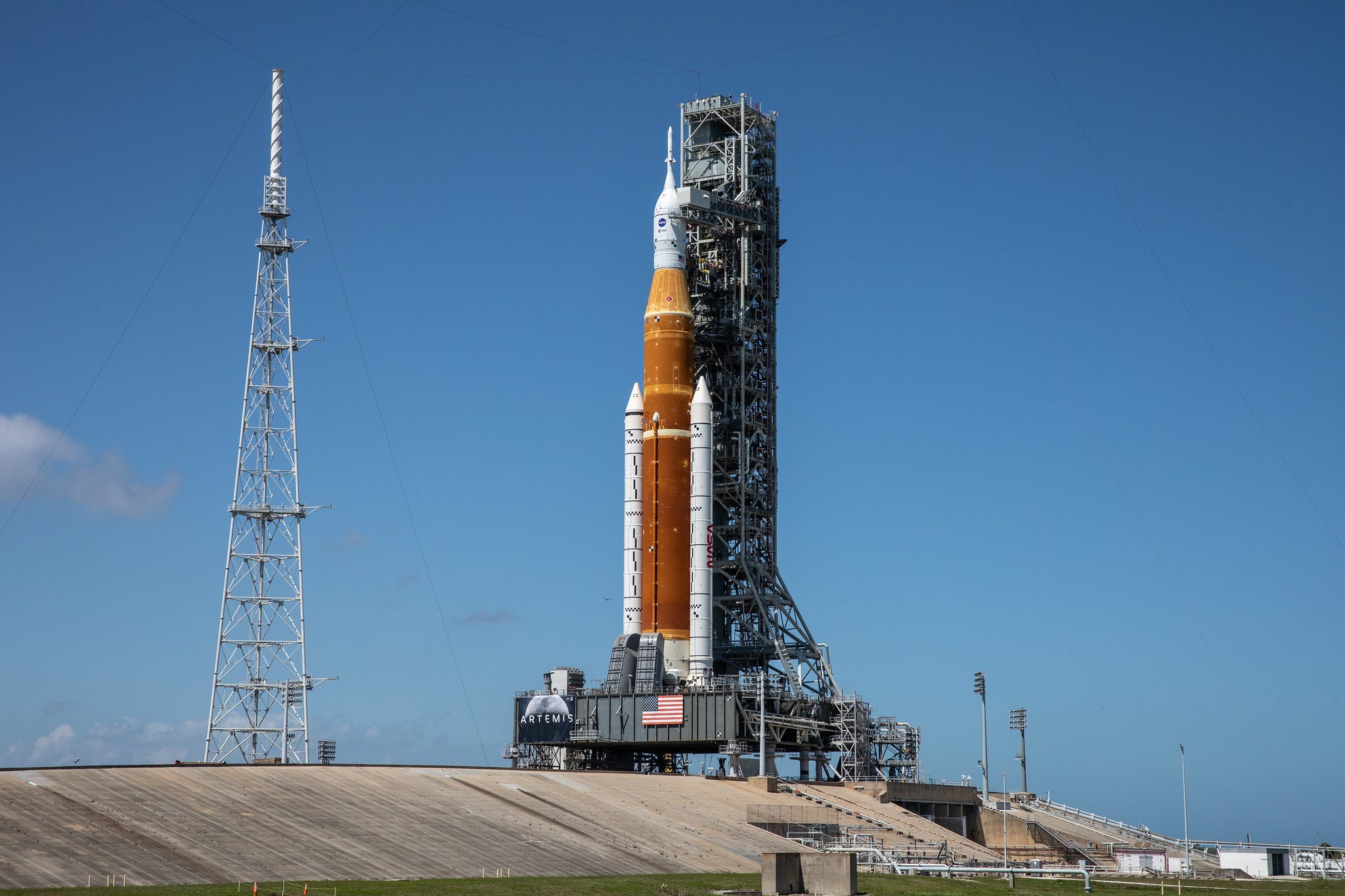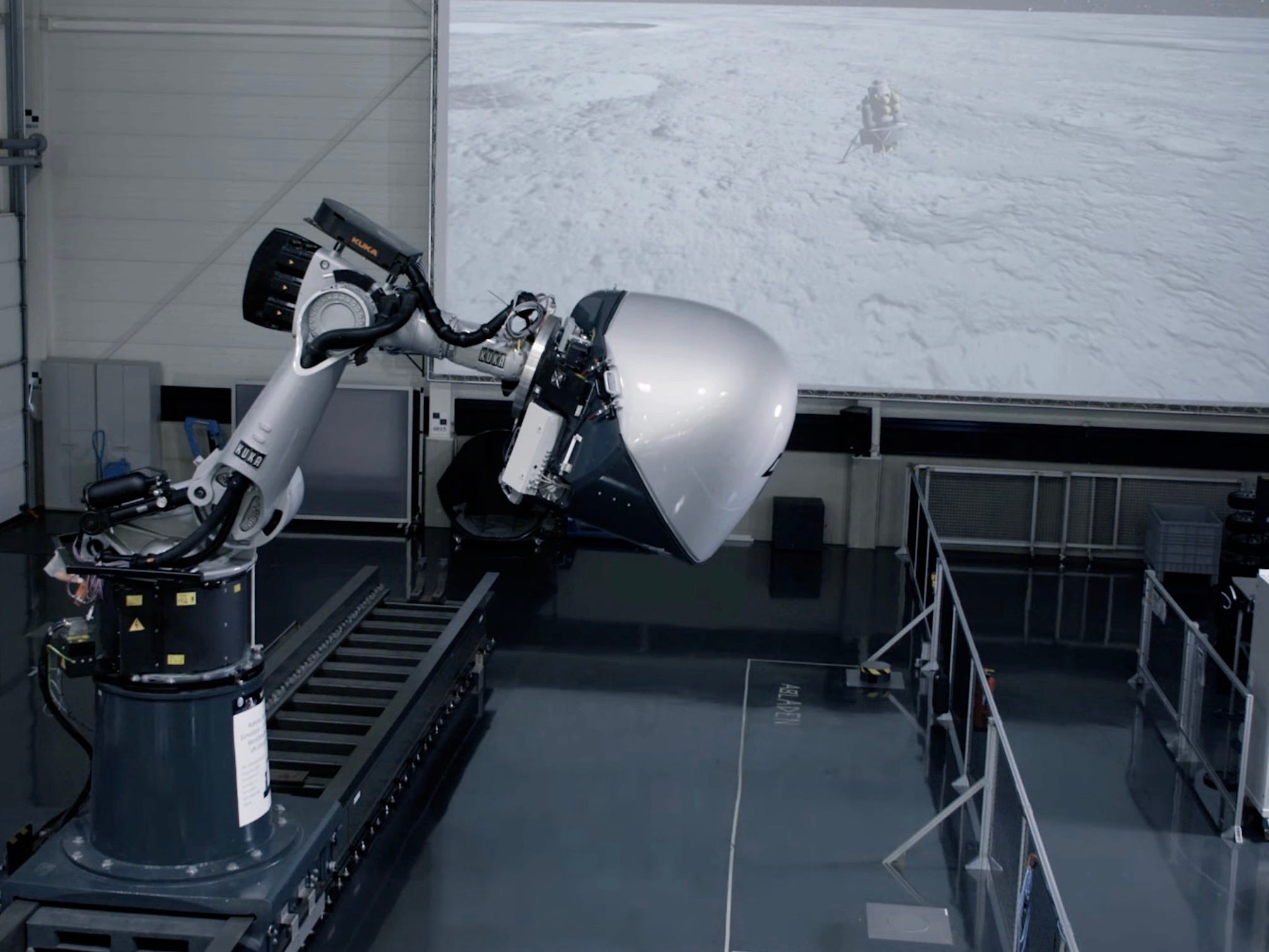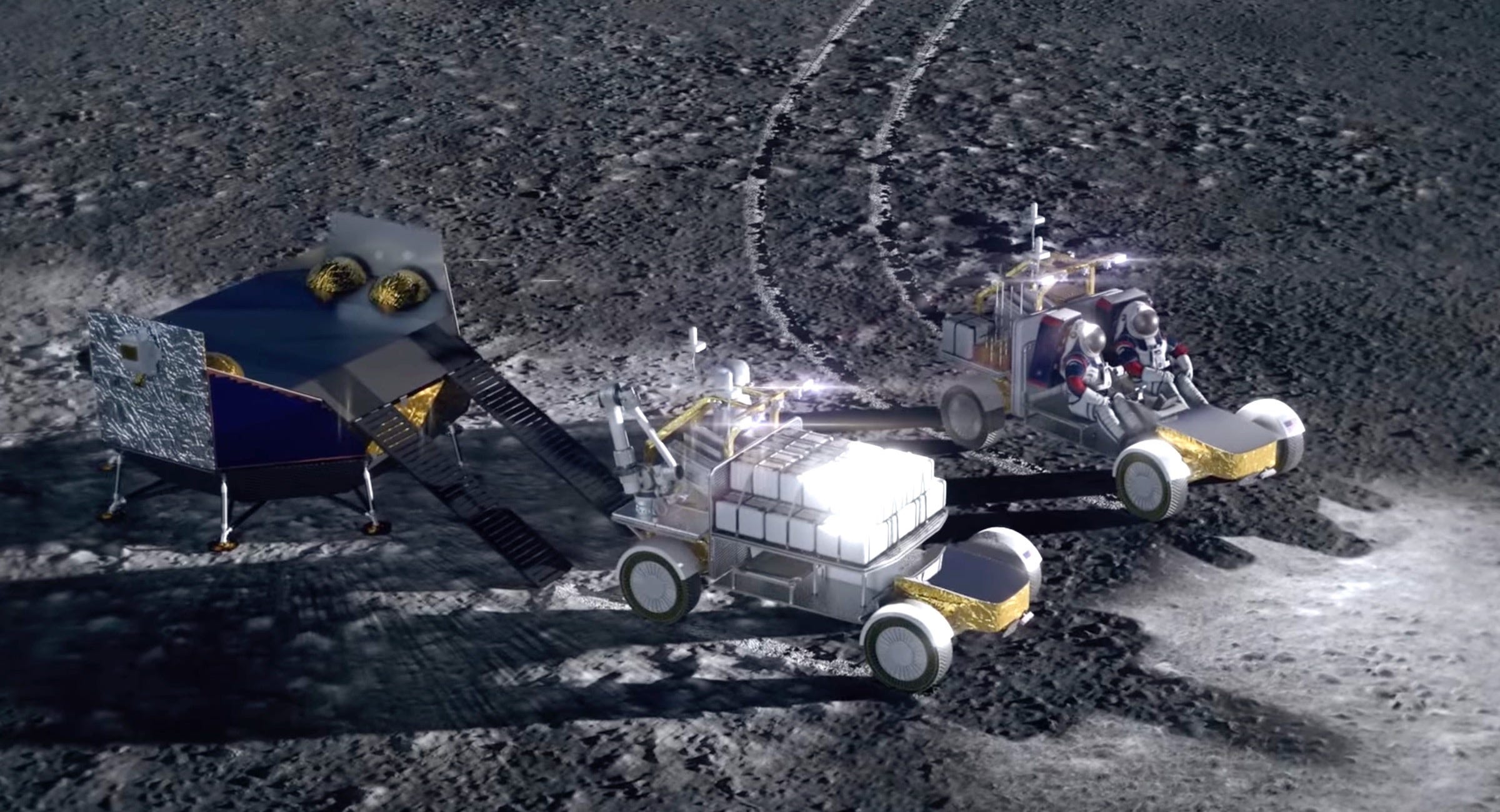Moon Monday #72: A rocket that won't move, a fancy landing simulator, and all lunar updates from last week
NASA’s Moon rocket just won’t move fast enough
The NASA SLS rocket’s already delayed wet dress rehearsal test before its much awaited launch for the Artemis I mission later this year is just not getting done. Originally scheduled for April 1-3, it was first delayed by a standard hold procedure due to four lightning strikes to the launchpad’s protective lightning towers on April 2 followed by an unrelated issue on April 3 with safely pressuring the rocket’s mobile launcher. Technicians fixed the issue overnight and proceeded with fueling the rocket on April 4 as planned but a vent control panel malfunctioning due to physically incorrect positioning on the hydrogen tank halted the test. Correcting the issue allowed NASA to retry only to encounter another problem.

On April 9, a roughly three-inch long helium check valve on the rocket’s second stage failed. Without it, helium can’t adequately clear the rocket’s fuel lines and purge the engines to enable safe, backflow-free fuel loading and draining. This valve needs to be either fixed or replaced. But NASA has decided not to do so and proceed with a reduced rehearsal scope on April 14, wherein they’ll only fully fuel and test the core stage while barely testing parts of the second stage. Assuming the reduced test is successful, NASA will roll back the SLS rocket to its assembly building to either fix or replace the fault second stage valve, and then decide the next steps.
ESA astronaut tests fancy lunar lander simulator
Italian ESA astronaut Roberto Vittori recently tested a robotic motion simulator at the German Aerospace Center DLR, which was configured to mimic a lander’s motions during a touchdown on the challenging terrain at the Moon’s south pole. ESA’s goal with this and future such activities is to help establish preliminary requirements for designing an eventual crewed lunar lander. Roberto tested multiple landing scenarios, including manually avoiding hazardous landing regions as well as overriding autonomous landing in favor of manual controls after experiencing technical faults.

Watchdog agency concerned with NASA’s CLPS program planning
The latest report from NASA’s Office of Inspector General (OIG) concerns NASA’s VIPER rover mission, which is to be delivered to the Moon’s south pole onboard Astrobotic’s Griffin lander as part of the agency’s CLPS program in late 2023. The OIG says that NASA doesn’t have a reliable true cost estimate for the mission because it separates its own costs to build and operate VIPER, currently at $433.5 million, from the funding the agency provides to Astrobotic to build their lander, which is currently estimated to be $235.6 million instead of the originally awarded $199.5 million and the later increased price of $226.5 million. The OIG says the said unreliability and cost discrepancy is because NASA chose not to use two key project oversight tools for the CLPS program it otherwise uses as standard for other missions. These tools are the Joint Cost and Schedule Confidence Level (JCL) analysis and Earned Value Management suites respectively.
More contenders for NASA’s Artemis crewed rover
NASA’s Artemis Lunar Terrain Vehicle (LTV), launching no earlier than 2028, will be far more capable than the Apollo LRV, allowing astronauts to explore 20 kilometers across the Moon’s rugged south polar terrain, including permanently shadowed regions. Unlike Apollo, the LTV will be used across multiple missions for at least 10 years. While we wait for NASA to solicit LTV proposals from U.S. companies in the coming months, here are all the proposers we know including the latest one.
- Lockheed Martin is partnering with General Motors, who helped develop Apollo’s LRV, to build an LTV-class rover. It will be able to preposition itself near a landing site prior to astronauts arriving on future Artemis missions, and conduct autonomous science operations. They announced last week that the rover will sport an MDA-provided robotic arm too. MDA is also building the robotic arm Canadarm3 for the NASA-led crewed Gateway lunar station.
- Northrop Grumman and its partners are building an LTV-class autonomous rover in both crew and cargo variants.
- Astrolab will bid their Flexible Logistics and Exploration (FLEX) rover. Unlike Lockheed and Northrop’s concepts, as far as we know, FLEX already has a fully-functional terrestrial prototype, which has been tested for mobility, crewed and remote operations, and to deploy a variety of large payloads.
- Last week Teledyne Brown Engineering, Sierra Space and Nissan North America revealed their partnership to bid an LTV-class rover as well.

More Moon
- The launch of Russia’s Luna 25 Moon landing mission has been delayed to August 2022 instead of July.
- India’s Chandrayaan 3 Moon landing mission will launch in 2023 instead of 2022 in order to complete additional landing tests.
- Did you know? India’s Chandrayaan 2 lunar orbiter is also a Sun watcher!
- On March 31, Northrop Grumman successfully completed testing its abort motor part of the emergency abort system on NASA’s Orion spacecraft. It will be onboard Artemis II’s launch in 2024, NASA’s first crewed Artemis mission.
- The Center for Lunar Science and Exploration is inviting High School students to apply for the free, year-long planetary science academic research program called Exploration of the Moon and Asteroids by Secondary Students (ExMASS).
